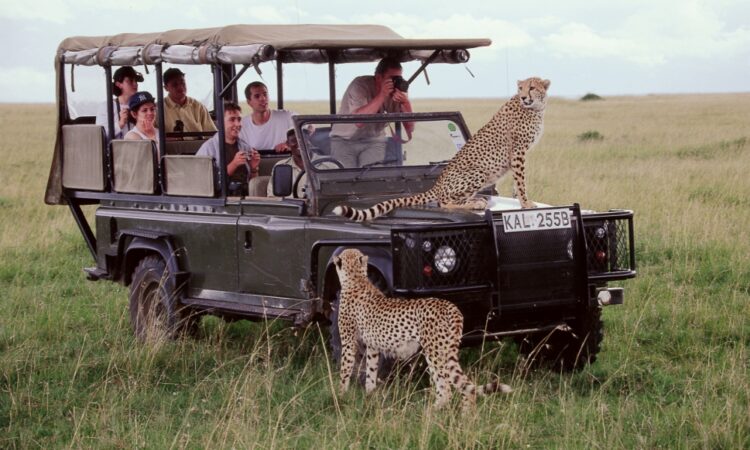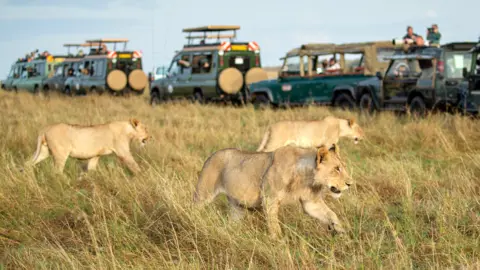Recommended Advice To Picking Taxi In Mombasa
Wiki Article
What Transportation Arrangements Must I Be Aware Of While On Holiday In Mombasa?
To make sure that your trip to Mombasa in Kenya is pleasant and stress-free It is essential to be aware of many transportation options that are available. Here are the most important transportation arrangements to consider:
1. How do I get to Mombasa
Moi International Airport (MBA) Moi International Airport (MBA), the principal airport in Mombasa is situated in Moi. It is a hub for international as well as national flights. Mombasa is served by numerous major airlines.
By Train: The Madaraka express, operated by Kenya Railways provides a comfortable and modern rail service that runs from Nairobi to Mombasa.
Bus: There are a variety of bus companies offering services between Mombasa (Kenya) as well as other cities that are major including Modern Coast Bus and Coast Bus.
2. Local Transportation in Mombasa
Taxis and Ride-Hailing services: Taxis can be found everywhere. Uber and Bolt provide ride-hailing services in Mombasa.
Tuk-tuks : These three-wheeled vehicles are a popular and inexpensive method of transportation within the city. They are a great option to travel for short distances.
Matatus - These are minibuses to share that operate through particular routes. They're the most commonly used form of transport. It is an affordable alternative, however it can be crowded.
Boda-bodas are available as well for those looking to travel quickly and easily, particularly for short distances, or in regions where there is heavy traffic.
3. Car Rentals
Self-Drive: Rental car services are accessible in the city as well as at the airport. Both international and local car rental companies offer a wide range of vehicles. Be aware of the driving conditions at your location and the local traffic laws.
Service for chauffeurs For those who do not want to drive yourself, there are chauffeur-driven rental cars available.
4. Ferry Services
Likoni-Ferry: This boat connects Mombasa with the southern portion of Mombasa, which is located on the mainland. It is essential to access the beaches of the southern part of the city and is a free service for pedestrians. Vehicles are charged a fee.
5. Day Trips, Excursions and Tours
Tour Operators: Numerous tour operators organize excursions to popular locations such as Mombasa Marine National Park (Fort Jesus), and beaches nearby, such as Diani or Nyali. Most of these tours include transportation.
Public Transportation: If you are an individual traveler, a mix of matatus (tuk-tuks), taxis, and tuk tuks can assist you get to all the places of interest.
6. Walking and cycling
Hire a bicycle to take an enjoyable ride.
Walking: Walking is a possibility in some areas of Mombasa particularly in the Old Town and along the beaches.
7. Travel Tips
Safety: Always select trustworthy taxi companies and avoid public transportation late at late at night. Be cautious of your belongings.
Negotiation is necessary to get taxis and Tuk-Tuks. As meters are not widespread, you'll have to negotiate before your trip.
Traffic: Expect heavy traffic, especially around Likoni Ferry or central business district.
If you're well-informed about the different transport options and have made all the arrangements required, your holiday will be stress-free. Have a look at the best Diani Beach taxi for website recommendations including safari excursions, african safari packages, kenya beach mombasa, mombasa tour packages, tour company in kenya, african safari packages, safari tour, tour and travel company, tour mombasa, cheap kenya safari packages and more.

What Are The Weather Conditions I Should Be Aware Of When Visiting Mombasa In Kenya?
Knowing the weather patterns in your area can help you pack appropriately and maximize your holiday. Here are the most important conditions to be aware of:
1. Climate Overview
Mombasa has an arid climate with high temperatures throughout the year. You can expect warm weather, with temperatures typically ranging from 24 degrees Celsius (75%F) to 32degC (90%F).
2. Seasons
The Hot and Humid season (November-April) is marked by high temperatures and humidity. It is also the most sought-after tourist season.
Long Rains (April - June): This rainy period brings heavy rainfalls, and occasionally thunderstorms. The roads may be slippery, making them difficult to navigate. The low season is here.
Cooler season (June to October) The temperature and humidity levels are the lowest at this time. It's a nice climate that is ideal for outdoor pursuits.
Short Rains (October through November): Short rain showers that are less intense occur during this period. Rain showers are usually short, and then later followed by bright sunlight.
3. Packing Tips
Lightweight Clothing: Pack light and breathable clothing like cotton and linen to stay cool in the summer heat.
Rain Gear: Take a raincoat, an umbrella and waterproof shoes in the rainy seasons.
Sun Protection: A high-SPF sunscreen broad-brimmed cap, sunglasses lightweight clothing, and covering the skin with light clothes will help protect you from intense sunrays.
Swimwear: Bring your swimwear to the beach or the hotel pool.
4. Weather-specific activities
Beach Time: The most ideal time for beach activities is in the cooler seasons (June through October) when the weather is nice and the conditions for swimming are ideal.
The calm, clear water from November to March is the perfect time to snorkel diving, snorkeling and other water sports.
Wildlife viewing: The cooler weather (June - October) is a great time to go on safaris or take a wildlife tour.
5. Health Concerns
Stay hydrated. The hot and humid conditions will force you to drink plenty of water. Make sure you drink plenty of water particularly if you're taking a walk in the sun.
Heat-related Infections: Know that heatstroke and heat exhaustion could be a possibility. Wear loose clothing, take breaks under the shade and avoid vigorous exercise during the hottest temperatures.
6. Travel Adjustments
Be aware of delays if you intend to travel during the rainy season. There may be instances where roads are impassable and outdoor activities could be restricted.
Tropical Rains: Sometimes, tropical rains can lead to delays in flights. Prepare contingency planning and stay updated on your travel plans.
7. Environmental Considerations
Natural Hazards - Know that heavy rain can cause flooding. Be aware of the weather conditions. Also, adhere to any safety guidelines issued by your local authorities.
Be aware of tides while making plans for beach activities. They can change dramatically. Check the tide schedules for your area in planning activities on the beach and swimming.
By knowing what to anticipate from the weather conditions in Mombasa it will help you plan and prepare for your trip. Pack safely, and have a pleasant trip. Check out the most popular Sgr transfer to Mombasa Airport for website recommendations including africa safaris and tours, africa tours and safaris, mombasa tour packages, safari trips in kenya, kenya beach mombasa, tour and travels, african safari packages, safari tour, travel & tours company, tours and travel company in kenya and more.

What Safari Planning And Tour Planning Is Required For A Holiday To Mombasa In Kenya?
When you're planning a tour or safari in Mombasa Kenya, it's important to consider all aspects that can make your trip memorable. These are the key points to keep in mind when planning a safari or tour in Mombasa, Kenya:
1. The choice of an Safari or tour operator
Choose a tour operator that has a good reputation and positive reviews. You can find accredited tour operators through the Kenya Association of Tour Operators.
Check out the various packages provided by tour operators. Packages can be luxurious or budget-friendly and vary in terms of length, accommodations and the activities that are included.
Guides - Ensure the guide is skilled and knowledgeable guides that are certified.
2. The most sought-after Safari Destinations starting from Mombasa
Tsavo Park: Kenya's largest game reserve, which is divided into Tsavo West and Tsavo West. It's famous for its wildlife diversity which includes elephants, lions, and rhinos.
Amboseli National Park: Famous for its elephant herds and breathtaking views of Mount Kilimanjaro.
Shimba Hills National Reserve: Near Mombasa It offers beautiful landscapes as well as the opportunity to spot rare species such as the Sable antelope.
Maasai Mara: Although farther than Mombasa It is famous for the Great Migration and offers an unparalleled safari experience.
3. Safaris and Tours - Types
Game Drives: Traditional safaris involve game drives in 4x4 vehicles, offering close encounters with animals.
Walking Safaris - Guided tours allow visitors to discover more about the smaller flora, fauna and plants.
Balloon Safaris. The tours are offered in several national parks, including the Maasai Mara. Get a bird’s eye perspective of the entire wildlife.
Beach and bush Combos: Combine a safari with a stroll along the stunning beaches of Mombasa to have a variety of experiences.
Incorporate cultural tours that include visiting local villages, historic sites and Mombasa Old Town.
4. Timing, Duration
Best Time to Visit The Dry season (June through October) is the best time to observe wildlife as animals gather at water sources. The Great Migration in the Maasai Mara typically occurs between July and October.
Safaris are offered in a variety of lengths, ranging from day trips to weeks-long adventures. Consider how long you would prefer to spend in the wilderness and the time you have available.
5. What to Pack
Clothing Light, breathable clothes in neutral shades. Wear the long sleeves as well as pants to provide nighttime protection from mosquitoes.
Footwear: Comfortable walking shoes or boots are essential, especially for walking safaris.
Accessories Sunscreen, sunglasses, and insect repellents are the essentials.
Equipment: Binoculars are crucial to wildlife photography and viewing. A camera that is reliable, with extra batteries and memory cards is also essential.
Make sure you have all the medications needed. You might want to bring antimalarial medications and a basic first aid kit, as well as any other medication you might need.
6. Health and Safety
Immunizations: Make sure you are vaccinated. the recommended vaccinations and carry the certificate of vaccination if needed.
Malaria Prevention - Apply insect repellents and long-sleeved shirts in the evening. Take a look at anti-malarial medications.
Food and water safety Consume only bottled, purified water. Food establishments that have a good reputation.
7. Costs and Payments
Budgeting Safaris can be costly Therefore, make sure you budget your expenses carefully. Think about all-inclusive vacation packages, which include accommodations, meals, activities and more.
Accepted payment methods for most operators include credit cards as well as bank transfers. Check the payment options and any deposit requirements.
8. Environmental and Ethical Questions
Eco-Friendly operators: Choose operators that adhere to environmentally sustainable practices in tourism.
Wildlife Protection: Respect wildlife and keep a secure distance. Do not disturb wildlife. Avoid buying products from endangered species.
9. Travel Insurance
Insurance for travel should cover safari activities, medical emergencies and possible travel disruptions.
10. Booking and Confirmation
Safaris are extremely sought-after and often book up fast, especially in peak times. Book in advance.
Confirmation: Check with your tour guide to confirm all information including pickup times, itinerary and contact details.
It is possible to enhance your Kenyan holiday by planning a safari excursion that's well-organized, fun, and exciting from Mombasa. Take a look at the best transfer to Diani for more tips including tours safari africa, kenya travel packages, safari company kenya, kenya tours and safaris, afri safari, trip tour companies, african safari tours kenya, african safari excursions, travel tour companies, africa tours and safaris and more.
